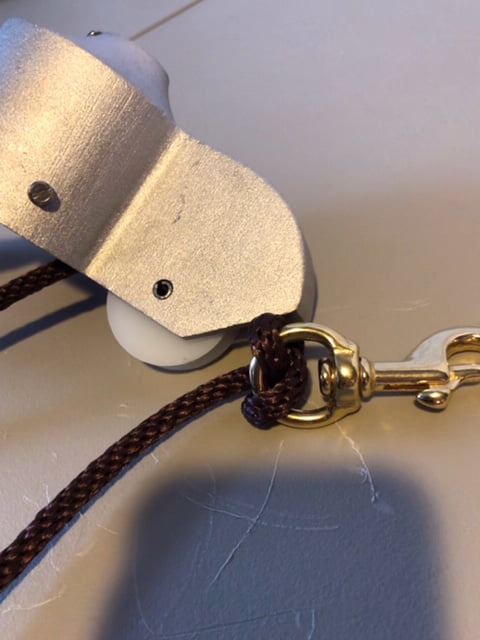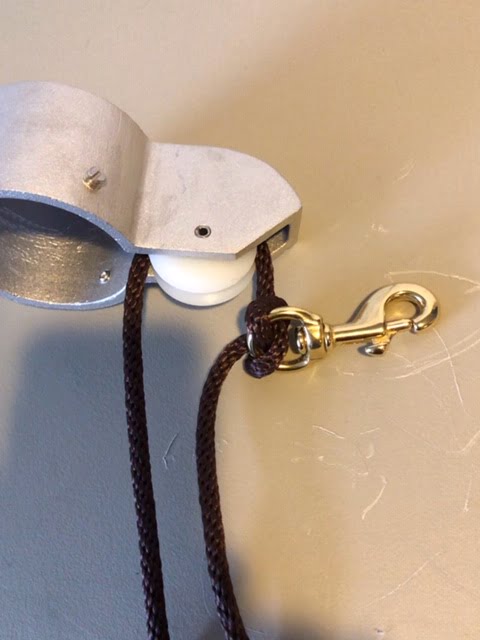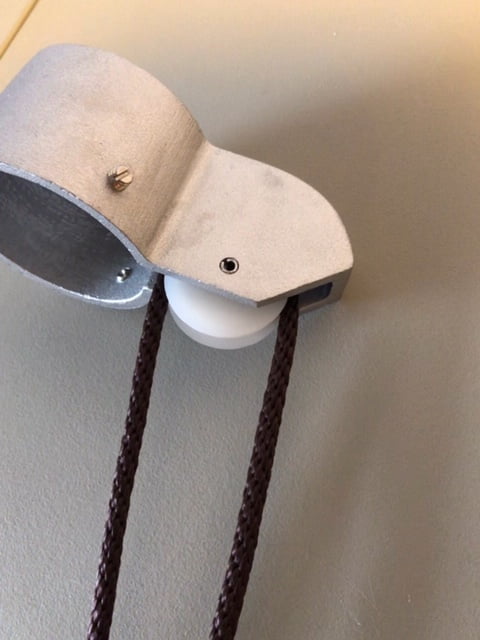Winter has been tough this year, no doubt, but why did my halyard break already? I just replaced it last year. Shouldn’t it last more than a season?
Although there is no firm answer to this question, your halyard should be lasting longer than one season. If yours isn’t, there are a few things to look at to figure out why your halyard prematurely frayed or broke.
The first thing to consider is the quality of your halyard. I cannot say with any guarantee that the plain rope you bought at the local hardware store will last longer than a rough winter season. I know these ropes may be cheaper than buying a flagpole halyard, and really, what is the difference? (There is a big difference) and you need to consider that sometimes you get what you pay for. Plain rope is not only cheaper in price, but it is also cheaper in quality, and it is NOT appropriate for your flagpole. Look instead for a quality solid braided polyester halyard. You should also make sure you have the appropriate sized halyard to fit your pulley. Typical residential flagpoles use 5/16″ halyards. Red River Flags offers many types and sizes of flagpole halyard and will cut to your length needed.
The second thing to consider is your flagpole. Is your flagpole worn and maybe a little rusty? Halyard rubbing on rough surfaces will definitely fray and break faster than a smooth aluminum surface. It is cool when you can still use an old metal family flagpole to proudly display your colors, or build your own flagpole out of wood. Just know that you will be replacing your halyard and flags a bit sooner when using those types of flagpoles due to the unusual friction those surfaces cause.
The most common reason we see, when your flagpole halyard frays or prematurely breaks has to do with the position of your flag clips in the vicinity of your truck and pulley (the mechanism on the top of your flagpole that your rope goes through). When we’re raising our flag, it’s common to want to make sure the flag is tight and snug at the top of the flagpole. When you raise your top flag clip or the knot of your rope into the truck, the rope rests against the truck. This rubbing action against the truck acts as a “saw” and with the vibration and movement (from wind), the halyard either frays or is literally cut in half, causing your halyard and flag(s) to fall to the ground. To avoid this, make sure you back your flag clip off a few inches from the truck. The only thing that should be touching the “pulley” inside the truck is the halyard, not the knot in your rope or the flag clips.
The picture above shows the correct sized halyard being used in the pulley. Using the wrong sized halyard can cause problems with premature fraying and breaking of the halyard as well as causing the halyard to “jump the track” if sized incorrectly. When the halyard “jumps the track”, you will not be able to raise or lower your flag as the halyard will be “stuck” beside the pulley.
Although no halyard will last forever, halyards should last several seasons. Red River Flags has quality halyard available in variable sizes and we can cut to length the halyard needed for your flagpole.




